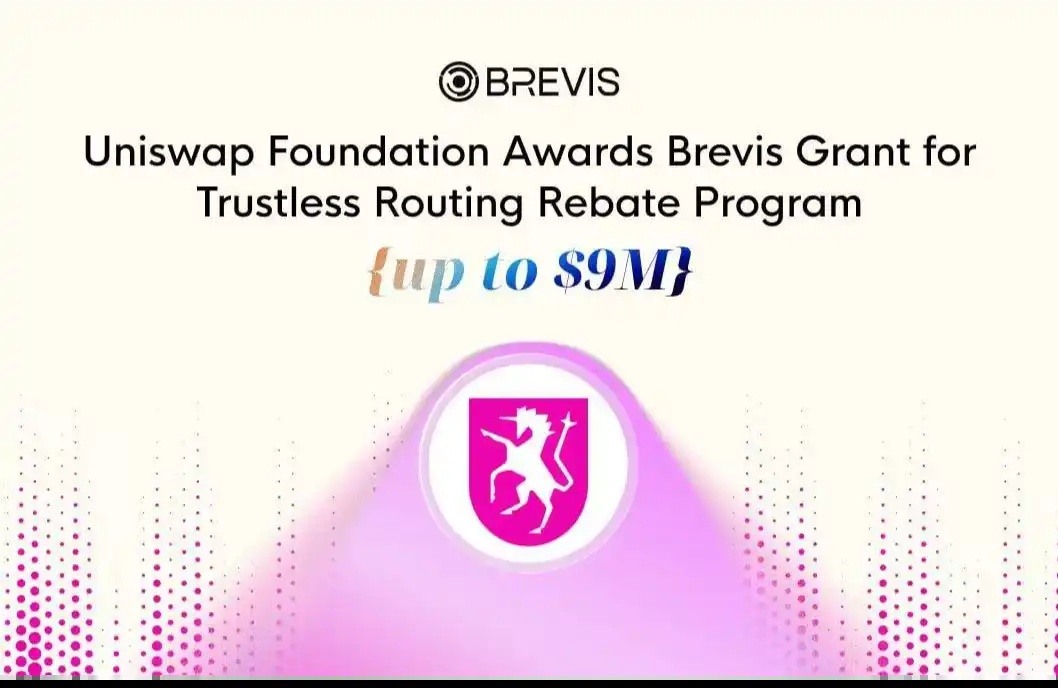Arbitrum Orbit mainnet is launched, will the Layer 2 RaaS war start again?
Yesterday, the Arbitrum Foundation posted a "Tomorrow" tweet, suggesting that a major announcement will be made today. And today, according to BlockBeats report, the Arbitrum "Orbit" mainnet is ready.
Arbitrum Orbit is an initiative launched earlier this year that allows blockchain developers to use Arbitrum's technology to launch their own Layer 2 or Layer 3 networks. Steven Goldfeder, CEO of Arbitrum's parent company Offchain Labs, said that these new Layer 3 networks had previously only run on the Arbitrum test network.

According to Offchain Labs, Orbit allows developers to "create their own dedicated chain to adapt one of Arbitrum's Layer 2 or L2 chains" on Arbitrum One, Arbitrum Nova, Arbitrum Goerli, and Arbitrum Sepolia.
Orbit+Stylus+BoLD, Arbitrum's "L3 Blueprint"
The Orbit plan is one of the first announcements released by the Arbitrum Foundation when it was established in March. It is used to create and deploy L3 development frameworks on the Arbitrum mainnet. Transactions on these L3s will be settled through Arbitrum's L2 (such as Arbitrum One or Nova).

In order to enable developers to better utilize the Orbit chain, Arbitrum has launched a series of technical solutions.
On June 22, Offchain Labs released the Arbitrum Orbit development tool, which aims to help developers develop more easily on the L3 blockchain Arbitrum Orbit and manage their own Arbitrum Rollup and AnyTrust chains. In addition, Offchain Labs also provides a quick start guide and Orbit DevNet on-chain tools.
In August, Arbitrum was updated even more intensively. At the beginning of the month, it released a new verification protocol, Bounded Liquidity Delay (BoLD). BoLD can achieve permissionless verification on Arbitrum, aiming to minimize the delay of settlement status. Arbitrum has always relied on Ethereum to confirm the accuracy of its status. Ed Felten, co-founder and chief scientist of Offchain Labs, said that the introduction of BoLD will eliminate the risk of delay attacks in this process, allowing anyone to become a validator without worrying about fraud.
On August 31, Arbitrum launched the Arbitrum Stylus code and public testnet, allowing developers to build applications on the Arbitrum Nitro chain using traditional EVM tools and WASM-compatible languages such as Rust, C, and C++. In addition, by improving computation, storage, and memory efficiency, Stylus significantly reduces gas costs and supports new blockchain use cases such as alternative signature schemes, larger generative art libraries, C++-based games, and previously computationally intensive AI models.
Since the release of Arbitrum Orbit, multiple projects have joined the Orbit Chain ecosystem.

On April 27, Ethereum scaling solution AltLayer's RaaS solution (Rollups-as-a-Service) has supported the L3 blockchain Arbitrum Orbit, allowing users to launch any L3 application bound to Arbitrum in minutes through code-free tools.
On September 5, Rollup as a Service (RaaS) company Caldera announced the launch of its first batch of Arbitrum Orbit chains, with a total of 3 partners planning to launch production-grade mainnet Orbit chains through Caldera in the coming weeks: Syndr, Sanko GameCorp, and Volatilis Technology.
On October 26, Celestia became the first modular data availability (DA) network integrated into Arbitrum Orbit and the entire Nitro stack.
It is foreseeable that Orbit will transform Arbitrum into an Ethereum-like settlement layer, adding more value to its core chain and enhancing the long-term scalability of the entire Arbitrum ecosystem.
Has the RaaS track become a red ocean?
In addition to Arbitrum, other mainstream L2s such as Optimism, zkSync, Starknet, and Polygon have also launched Stack solutions, trying to open source core components and promote RaaS solutions in order to seize the strategic heights of Layer 2 and even Layer 3.

Image source: Binance Research
OP Mainnet (formerly known as Optimism)'s rollup solution OP Stack took the lead and has been at the forefront of many L2s.
OP Stack built Optimism's L2 rollup to create a shared, interoperable and collaborative L2 blockchain network. Builders can modify existing modules or create new modules to suit their needs, and ultimately, Optimism expects highly compatible L2s, called OP chains, which will form part of the Superchain.
In June of this year, Optimism announced the launch of the mainnet Bedrock upgrade, the first official release of the OP Stack, representing a completely modular rewrite of the core components of the Optimism rollup architecture. Today, Optimism's flagship rollup is built on the modular OP Stack, and Bedrock not only represents an upgrade to the Optimism rollup, but also provides tools for launching an Optimism L2 rollup blockchain.
In addition to the OP ecosystem, the two L2 giants in the zk track have also made their own breakthroughs in this regard.
On June 26, zkSync development team Matter Labs announced the launch of ZK Stack, a modular open source framework for building custom zkRollup. ZK Stack will give developers complete autonomy, from choosing data availability models to using the project's own Token decentralized sorter.
ZK Stack provides two key features: sovereignty and seamless connectivity. Creators have full rights to the code and enjoy unrestricted autonomy to customize and shape all aspects of the zkRollup chain. These zkRollup chains run independently, relying only on Ethereum L1 for their activity and security, while cross-chain bridges exist to facilitate the interconnection of each chain, achieving trustless, fast and cheap (single transaction cost) interoperability.
In addition, zkSync hyperchains, like Arbitrum, has also set its sights on L3. The hyperchains implementation adopts a modular approach and provides developers with a hyperchain software development kit (SDK) framework, enabling them to choose a variety of components to build their blockchains or develop their own components.
Looking at Starknet, on July 19, StarkWare co-founder Eli Ben-Sasson said at the EthCC (Ethereum Community Conference) in Paris that Starknet is about to launch Starknet Appchains. Starknet Appchains has the characteristics of customizability and decentralization. By creating a Starknet application chain, applications can provide users with better throughput and enhanced user experience.
The Polygon team, which is recognized as the most capable BD (Business Development) team in the crypto industry, has already brought in Canto, which was previously based on Cosmos, and Manta, which moved from Polkadot to OP.
From the above summary, we can see that although the visions of these L2s are different, their core is customized and application-specific chains. In general, the technological development of the crypto industry has upgraded and iterated from "one-click coin issuance" to "one-click chain issuance".
Related reading: "2023, are there too many chains? 》
"Today, there are a large number of ready-to-use RaaS services in the market. I also used another RaaS product, Conduit, which helped Zora release a testnet and mainnet based on OP Stack. After testing, it is no exaggeration to say that building an OP L2 test chain only requires one click of the mouse."
The multi-chain and multi-Rollup pattern in the crypto world is an inevitable trend, and the giants' layout of the RaaS track has also brought more possibilities to the future on-chain ecology. Under the leadership of the giants, RaaS is gradually and clearly becoming a new subdivision track with huge demand. Regardless of the technology adopted and the management method used, the value of L3, Superchains and hyperscalability is obvious, and they all seem to point to the ultimate ideal of infinite scalability.
reference:
https://www.theblockbeats.info/search/Starknet%20%E5%A0%86%E6%A0%88
https://mp.weixin.qq.com/s/UxTPNaCSZAe-uY97eH9yrA
Welcome to join the official BlockBeats community:
Telegram Subscription Group: https://t.me/theblockbeats
Telegram Discussion Group: https://t.me/BlockBeats_App
Official Twitter Account: https://twitter.com/BlockBeatsAsia


 Forum
Forum Finance
Finance
 Specials
Specials
 On-chain Eco
On-chain Eco
 Entry
Entry
 Podcasts
Podcasts
 Activities
Activities
 OPRR
OPRR









